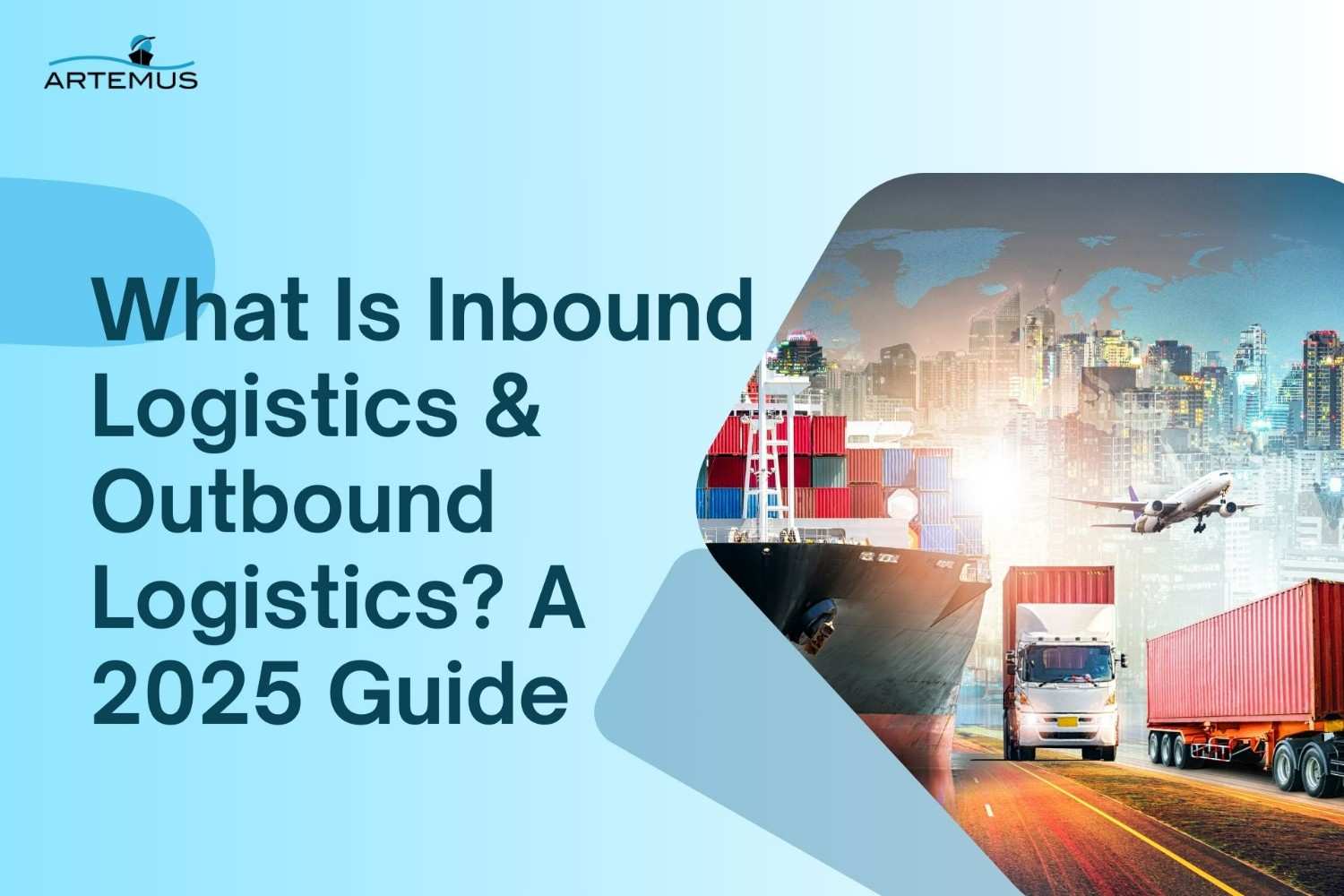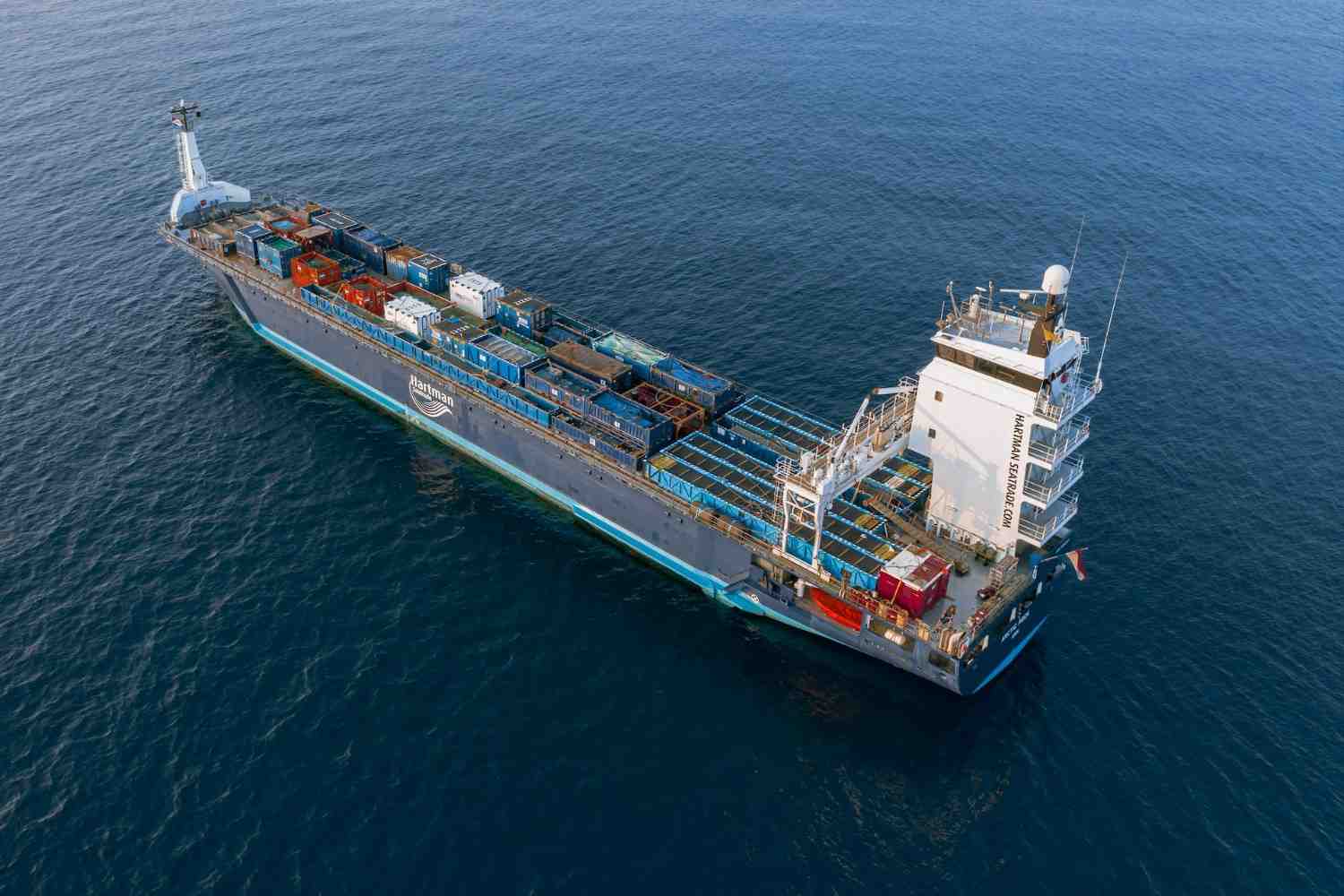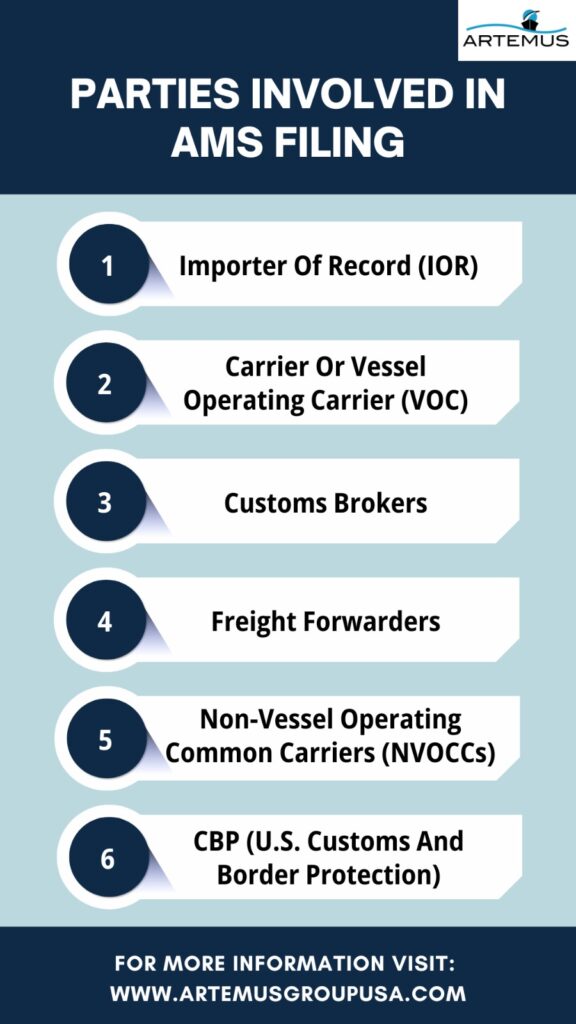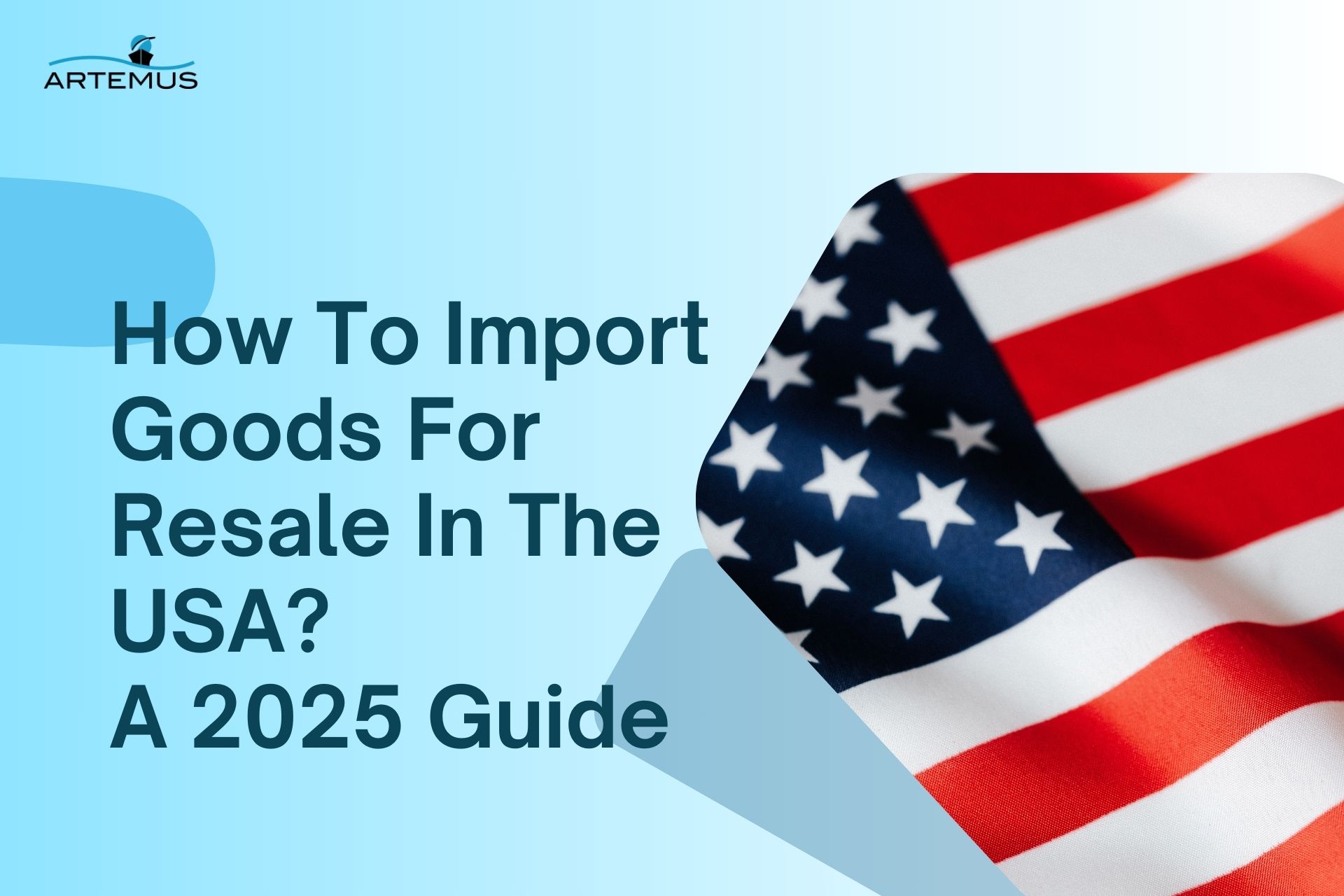
What Is Inbound Logistics & Outbound Logistics? A 2025 Guide
In the dynamic world of supply chain management, understanding the nuances of inbound and outbound logistics is crucial for operational

In the intricate world of international trade and logistics, ensuring the smooth flow of goods across borders requires adherence to a multitude of regulations and procedures. One crucial aspect of this process is the Automated Manifest System (AMS) filing, a cornerstone of efficient customs clearance and compliance. But the question arises: who bears the responsibility for this vital task?
In this blog, we unravel the roles and responsibilities of the key parties involved in AMS filing & answer the question – Who Is Responsible For AMS Filing? We’ll also shed light on the collaborative efforts that drive seamless trade and secure supply chains. Join us as we explore the significance of AMS filing and the vital players accountable for its accurate and timely execution.
Artemus provides comprehensive compliance support through its AMS software solution.
Table Of Contents
The responsibility for AMS (Automated Manifest System) filing typically falls on the parties involved in international trade and transportation. The primary responsibility rests with the Importer of Record (IOR) for inbound shipments and the Carrier or Vessel Operating Carrier (VOC) for outbound shipments. However, customs brokers, freight forwarders, and Non-Vessel Operating Common Carriers (NVOCCs) often play essential roles in facilitating the AMS filing process on behalf of their clients.
Each party involved must ensure accurate and timely submission of AMS data to comply with U.S. Customs and Border Protection (CBP) regulations. Collaboration and clear communication between all stakeholders is crucial to ensuring a smooth and compliant AMS filing process, enhancing supply chain efficiency, and avoiding penalties for non-compliance.
Related: From Start To Finish: How To File AMS For USA Shipments?
AMS (Automated Manifest System) filing is a critical component of international trade and transportation, ensuring the efficient movement of goods across borders while meeting regulatory requirements. Various entities are involved in the AMS filing process, each playing a specific role to facilitate the smooth flow of information and compliance with customs regulations. Let’s explore the key parties involved in AMS filing:

The Importer of Record is the entity or individual responsible for the imported goods and holds the ultimate liability for complying with customs laws and regulations. They are required to provide essential shipment information, including product details, tariff classifications, and the consignee’s information. The IOR must work closely with customs brokers or freight forwarders to ensure accurate and timely AMS filing, avoiding potential delays and penalties.
For outbound shipments, the Carrier or Vessel Operating Carrier takes on the role of submitting the AMS filing. This party operates the vessel or aircraft and is responsible for providing critical transportation information, such as the voyage or flight details, container numbers, and cargo descriptions. Accurate AMS filing by the carrier is essential for successful exportation and compliance with international trade laws.
Customs brokers act as intermediaries between the importer/exporter and the customs authorities. They possess expertise in customs regulations, documentation, and procedures, facilitating seamless customs clearance. Customs brokers play a vital role in preparing and submitting the AMS filing on behalf of the importer or carrier, ensuring that all necessary information is accurate and in line with CBP requirements.
Freight forwarders hold the responsibility of orchestrating the transportation of goods from their starting point to the ultimate destination. They organize transportation, handle documentation, and assist with customs formalities, including AMS filing. Freight forwarders collaborate closely with the IOR, carrier, and customs brokers to ensure the accurate and timely submission of AMS data.
NVOCCs are entities that consolidate and transport goods without owning the vessels. Acting as intermediaries, they frequently bridge the gap between the shipper and the carrier. NVOCCs may take on the role of submitting the AMS filing when they are responsible for the consolidated shipment. In such cases, they must ensure all relevant data is correctly provided to CBP.
As the regulatory authority responsible for monitoring and facilitating international trade, CBP receives and processes the AMS filings. They use this information to conduct risk assessments, determine duty and tax liabilities, and identify any security or compliance concerns related to the shipment.
Related: Ocean AMS Filing Requirements: 7 Must-Have Documents
AMS filing (Automated Manifest System) is a vital procedure in international trade that varies depending on the type of shipment being transported. Different types of shipments require specific information to be submitted through AMS to ensure customs compliance and smooth movement of goods. Here’s a brief overview of AMS filing for various shipment types:
For FCL shipments, where a single consignee’s goods occupy an entire container, the AMS filing includes details such as container numbers, seal information, cargo descriptions, and the consignee’s data. Accurate submission is critical to expedite customs clearance and avoid any delays.
In LCL shipments, multiple shippers’ cargo is consolidated into a single container. The AMS filing must include information for each shipper, such as their respective cargo descriptions, marks, and numbers. Careful coordination between the consolidator, freight forwarder, and customs broker is essential for accurate filing.
For breakbulk and bulk shipments, where goods are not containerized, AMS filing requires detailed information about the cargo, including weight, volume, description, and commodity codes. Accurate data ensures smooth customs processing and compliance.
HAZMAT shipments demand heightened scrutiny and safety measures. AMS filing for these goods must include additional information like proper shipping names, hazard class, and emergency response contact details to comply with strict regulations.
For perishable goods, timely AMS filing is crucial to expedite clearance and maintain product integrity. The filing includes details of temperature-controlled containers, shelf life, and any specific customs requirements related to perishables.
Related: AMS Filing Requirements For Importers, Carriers, & NVOCCs
In the realm of international trade and transportation, AMS filing (Automated Manifest System) demands a collaborative effort among all stakeholders to ensure seamless customs clearance and compliance. Adopting best practices in AMS filing can significantly enhance efficiency and mitigate potential challenges. Here are some key principles of collaborative responsibility and best practices for successful AMS filing:
Related: AMS Fee In Shipping: Overview & 5 Key Considerations
Artemus AMS Software Solution offers a comprehensive and efficient way to manage your AMS filings seamlessly. With its user-friendly interface and powerful features, it simplifies the process of submitting and tracking your Automated Manifest System (AMS) filings. Say goodbye to manual paperwork and streamline your AMS compliance with ease.
Artemus AMS Software Solution ensures accuracy, compliance, and timely submissions, helping you stay on top of your import and export requirements. Experience a hassle-free AMS management system tailored to your business needs, empowering you to focus on what matters most – growing your business.
Related: AMS Filing Penalty Cost: Most Common Pitfalls & Solutions
The responsibility for submitting AMS filing typically falls on the Importer of Record (IOR) for inbound shipments and the Carrier or Vessel Operating Carrier (VOC) for outbound shipments.
AMS filing requires essential information such as shipment details, IOR/consignee information for inbound shipments, carrier/VOC details for outbound shipments, container/shipment identification numbers, and hazardous material classification (if applicable).
AMS (Automated Manifest System) is used for ocean and air cargo, providing shipment details to U.S. Customs and Border Protection (CBP). ACE (Automated Commercial Environment) is a broader system encompassing AMS and other trade-related processes, serving as the primary electronic data interchange between trade entities and CBP.

In the dynamic landscape of international trade, the responsibility for AMS filing is a shared endeavor among multiple stakeholders. From the Importer of Record (IOR) ensuring accurate inbound shipment details to the Carrier or Vessel Operating Carrier (VOC) orchestrating outbound cargo data, each party plays a critical role in this intricate process. Customs brokers and freight forwarders act as indispensable facilitators, leveraging their expertise to navigate the complexities of customs regulations.
As we conclude our exploration on Who Is Responsible For AMS Filing, it becomes evident that collaborative responsibility is the linchpin of successful AMS filing. Through open communication, accurate data submission, and technology integration, these stakeholders forge a seamless flow of information, bolstering supply chain efficiency and compliance.
Related: A Quick Guide On Import Security Filing: What Is ISF?

In the dynamic world of supply chain management, understanding the nuances of inbound and outbound logistics is crucial for operational

In today’s interconnected world, businesses rely heavily on global trade to expand their markets, access new resources, and drive growth.

Importing goods for resale in the USA presents a lucrative business opportunity, but navigating the complexities of U.S. customs regulations,
Get In Touch
Artemus’ Software Solutions for ISF, AMS, Japan AFR, eManifest Canada, & Panama B2B filings.